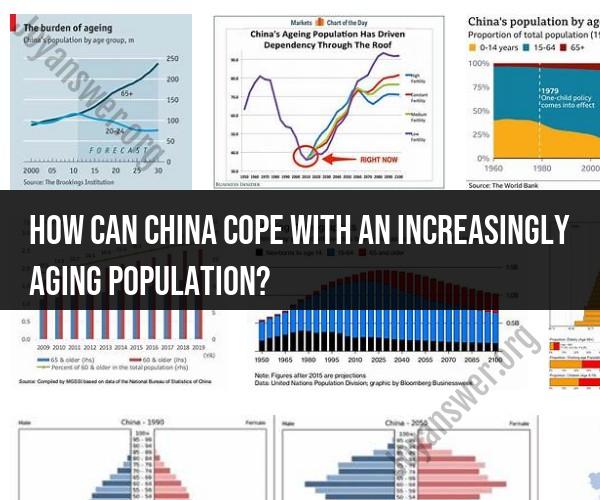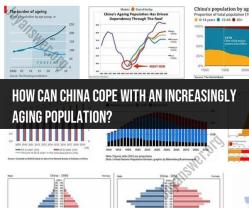How can China cope with an increasingly aging population?
Coping with China's aging population is a complex challenge that requires a combination of strategies and policies to address the social, economic, and healthcare implications. Here are some strategies and challenges that China can consider:
Strategies:
Social Security and Pensions:
- Strengthen and expand the social security system to provide financial support for retirees. Ensure that pensions are adequate to cover living expenses and healthcare costs.
Healthcare Reform:
- Invest in healthcare infrastructure and services, especially in rural areas, to meet the growing healthcare needs of the elderly population. Promote preventive care and early intervention.
Elderly Care Services:
- Develop a comprehensive network of elderly care services, including nursing homes, assisted living facilities, and home-based care. Encourage private-sector involvement in providing these services.
Long-Term Care Insurance:
- Establish long-term care insurance programs to help cover the costs of nursing home care and other long-term care services. These programs can help ease the financial burden on families.
Workforce Participation:
- Encourage older adults to remain in the workforce for longer by creating age-friendly workplaces, providing training and re-skilling opportunities, and addressing age discrimination.
Family Support Policies:
- Develop policies that support families in caring for elderly relatives, such as paid family leave and flexible work arrangements.
Aging-Friendly Communities:
- Create communities that are accessible and age-friendly, with features like public transportation, affordable housing, and recreational opportunities for older adults.
Promote Healthy Aging:
- Promote healthy lifestyles through public health campaigns, emphasizing physical activity, balanced nutrition, and regular health check-ups.
Fertility Policies:
- Reevaluate and possibly adjust fertility policies to address declining birth rates. Encourage families to have more children, if desired.
Challenges:
Economic Burden:
- The financial burden of supporting an aging population can strain government budgets and social security systems. Balancing the costs of healthcare, pensions, and long-term care is a significant challenge.
Labor Market Impact:
- An aging population can lead to a shrinking workforce, which may affect economic growth and productivity. Strategies to keep older adults in the workforce must be carefully implemented.
Healthcare Infrastructure:
- Expanding healthcare services to meet the needs of the elderly requires significant investments in healthcare infrastructure, including hospitals and clinics.
Cultural Norms:
- Traditional family structures in China often involve intergenerational living arrangements. Encouraging more independent living or reliance on formal care services may face resistance due to cultural norms.
Rural-Urban Disparities:
- Aging populations in rural areas may face greater challenges accessing healthcare and elderly care services compared to urban areas. Addressing these disparities is essential.
Elderly Abuse:
- As the elderly population grows, there may be an increased risk of elder abuse. Implementing safeguards and support systems is crucial.
Policy Implementation:
- Ensuring effective implementation of policies and programs at the local level is a challenge, especially in a vast and diverse country like China.
Coping with an aging population in China will require a multifaceted and coordinated approach involving government, civil society, healthcare providers, and communities. Flexibility and adaptability in response to changing demographic trends and economic conditions will be essential in addressing the challenges posed by an aging society.








